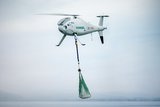Teledyne begins production on unmanned LBS-G underwater vehicle programme for US Navy
Teledyne Technologies Incorporated announced today that its subsidiary, Teledyne Brown Engineering, Inc., in Huntsville, Ala., received approval from the U.S. Navy to move into Full Rate Production (FRP) Phase on the Littoral Battlespace Sensing-Glider (LBS-G) Program. This is the first ocean glider FRP decision ever made in the history of the Navy. Teledyne Brown will provide the Navy with a fleet of 150 marine gliders for a total contract value of $53.1 million if all options are exercised.
Under the contract with the Space and Naval Warfare Systems Command, Teledyne Brown recently delivered 15 Low Rate Initial Production Gliders to the Navy's Program Executive Office for C4I. The LBS-G gliders were developed and are manufactured by Teledyne Webb Research in East Falmouth, Mass. The first Full Rate Production option calls for the manufacture of 35 gliders with additional options for 100 more gliders. The Teledyne Team, which includes Teledyne Brown (System Integration), Teledyne Webb Research (Glider Development and Production), and the University of Washington - Applied Physics Lab (Glider Operations Center software) finished the design and development phase of the contract in August of last year and received the Low Rate Production contract in December of 2010.
"We are very pleased to have Teledyne's glider selected by the U.S. Navy for full rate production in the Littoral Battlespace program," said Robert Mehrabian, chairman, president, and chief executive officer of Teledyne Technologies. "This decision validates our reliable and affordable design and reinforces our corporate strategy to integrate our technologies across the company onto platforms such as the glider."
The Navy plans to use the fleet of deep and shallow water gliders with their relative low cost, minimal power usage and longevity at sea to acquire critical oceanographic data to improve positioning of fleets during naval maneuvers. The Teledyne Webb Research Slocum Glider is the cornerstone of the LBS-G program. The Slocum Glider is a torpedo-shaped unmanned underwater vehicle that measures approximately two meters in length and uses changes in buoyancy along with its wings and tail-fin steering to move through the water.
Source: Teledyne Technologies
More from Uncrewed Vehicles
-
Jammer resistant drone designs spark search for countermeasures
The Russia-Ukraine conflict has driven another stage of evolution for drones and the counter measures to defend against them.
-
![L3Harris launches Amorphous software for control of uncrewed platforms]()
L3Harris launches Amorphous software for control of uncrewed platforms
The new Amorphous software is a universal controller that would allow a single operator to control a swarm of “thousands” of uncrewed systems, from drones to underwater platforms.
-
ideaForge unveils new UAVs at Aero India 2025
India UAV supplier ideaForge has launched the Netra 5 and Switch V2 drones at Aero India 2025, boasting of enhanced endurance, AI-driven autonomy and improved operational capabilities.
-
![Shaping the future of defence: What 2025 holds for the global drone market]()
Shaping the future of defence: What 2025 holds for the global drone market
The UAV market is experiencing unprecedented growth, with innovations in technology and battlefield applications driving demand across military sectors. From the battlefields of Ukraine to NATO exercises and beyond, drones are transforming how wars are fought and supported.
-
![Maris-Tech confirms customers signing up for Jupiter Drones codec and AI-powered system]()
Maris-Tech confirms customers signing up for Jupiter Drones codec and AI-powered system
Launched at AUSA in October, the company’s multi-stream video codec is attempting to bring a new lease of life to drone technology through its AI accelerator.
-
![AUSA 2024: Quantum-Systems targets big 2025 with UAS developments]()
AUSA 2024: Quantum-Systems targets big 2025 with UAS developments
Quantum-Systems has been upgrading its UAS family, with new versions of the Vector, Reliant and Twister drones set for release throughout 2025.
























